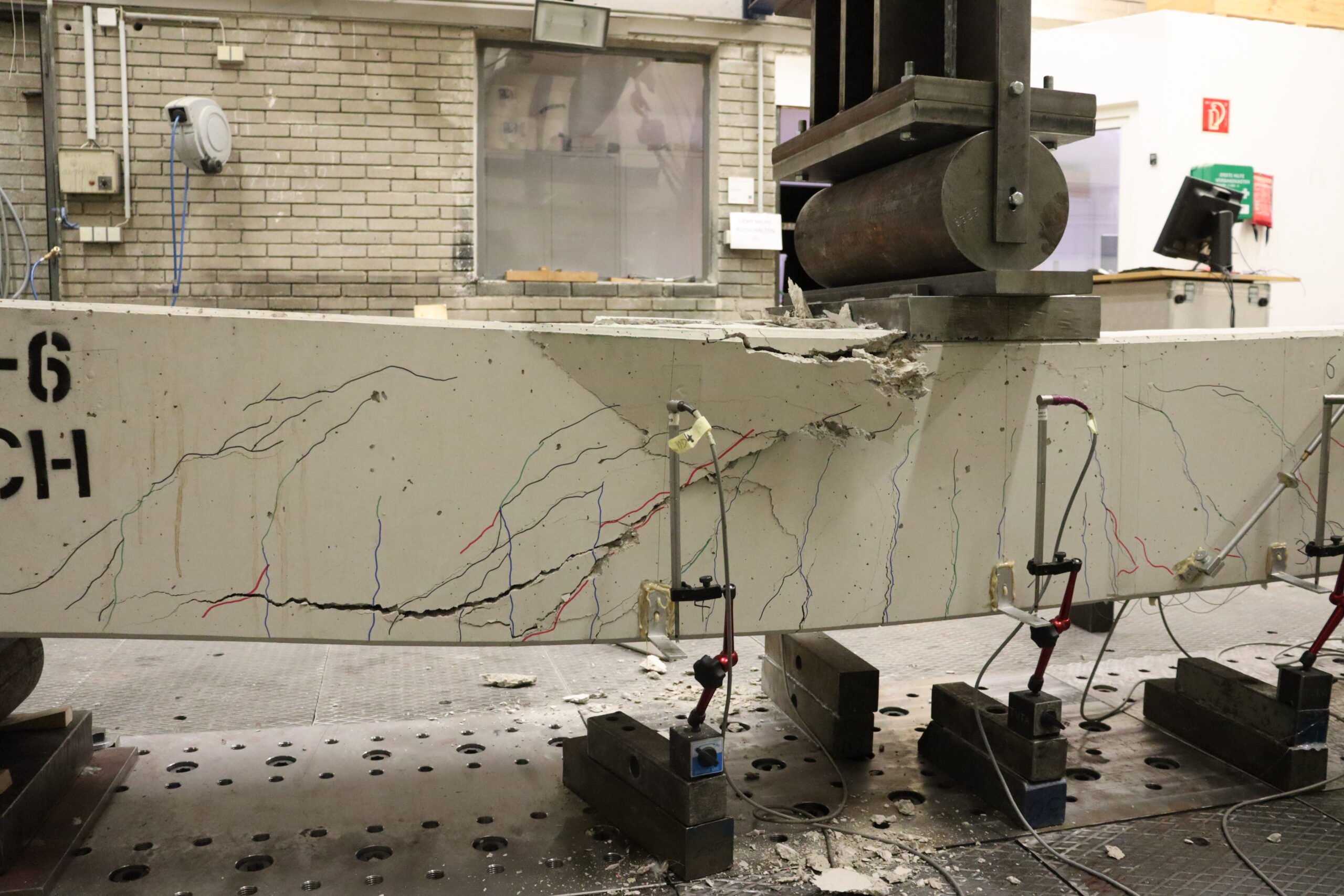
Many aging concrete bridges in Europe and the U.S. could become safety hazards in the coming years. This is because the majority of road and rail bridges were built within 30 years after WWII and are now at least 40 years old. But reinforced concrete also ages and suffers from environmental effects. Reinforced concrete bridges used in road construction, for example, are exposed to massive salt loads which attack the reinforcement inside the concrete structures. Many of the bridges are also too weak for the significantly increased traffic volume and traffic loads and no longer comply with current standards.
Reinforcing concrete bridges
“This is a big problem because, through the decades, a huge national wealth of infrastructure has accrued. These structures should last as long as possible. But since the required safety in these structures can no longer be assured due to deficiencies in the steel reinforcement, we need methods to strengthen these structures,” says Professor Jürgen Feix from the Solid and Bridge Construction Department at the University of Innsbruck, Austria.
Also interesting: Artificial intelligence to be used for inspecting bridges
It is both economical and ecological to use existing structures for as long as possible. Demolition and new construction of bridges entail longer traffic detours. If a railroad has to be rerouted, this is many times the CO2 pollution that would be caused by the new bridge alone.
Concrete anchor bolt as replacement reinforcement
Professor Feix and his team have been researching a repair option for aging concrete bridges for more than 10 years. They have found a solution for retrofitting existing structures with deficiencies in the steel reinforcement, thereby restoring the load-bearing capacity in accordance with current standards. An additional advantage is that the replacement reinforcement can be carried out while the road or rail line is still in operation.
This innovation involves further developing the concrete screw. This can be inserted into the concrete beam like a dowel by means of a self-tapping thread and anchored at the other end with a kind of washer.
The so-called concrete anchor bolt has already been approved, plus a design indicating how many bolts are required to attain the required load-bearing capacity according to today’s standards, explains Professor Feix. Initial applications of this replacement reinforcement show that its costs are only one-tenth those of demolition and new construction. Now the Innsbruck team is working on an extension of this solution that is even more economical.

Range of existing building fabrics
The problem with the cost-effective repair of aging concrete bridges is the wide range of existing building fabrics. This is because the oldest bridges from the 1950s were still built without shear force reinforcement, which serves – in conjunction with the concrete – to reinforce the load-bearing capacity of bridge beams. “When a load is driven across a bridge, the concrete beam can take the pressure, but it deflects, creating a pull on the underside of the beam. To absorb this tension, you need flexural reinforcement on the underside of the beam and, at the same time, shear reinforcement connecting the compression zone on the top of the beam to the tension zone on the underside of the beam,” Professor Feix explains.
This results in a design of steel reinforcement that is oriented toward truss construction. This means that steel elements running linearly along the top and bottom of the beam are connected with steel elements running obliquely or vertically upwards.

Shear force reinforcement
The first shear force reinforcements were not integrated into the slabs of concrete bridges until the 1960s and 1970s. Initially, these were shear bents, in which a steel element coming straight from the underside goes up at an angle of 45 degrees, at which point it straightens again. It is therefore a continuous s-shaped iron. In the 1970s and 1980s, stirrup reinforcement finally gained acceptance. This is a closed rectangular shape that is inserted vertically into the concrete beam at regular intervals. “The stirrups direct the compression struts coming down back up again, and that’s how this truss effect can occur in the beam,” Professor Feix said.
With regard to the current standard, deficiencies in shear reinforcement are measured for both types of reinforcement – namely when shear bending up and stirrups, which connect the compression zone and the tension zone, are not present to a sufficient extent. The Innsbruck researchers compensate for this deficiency by subsequently introducing vertical replacement reinforcement in the form of the concrete anchor bolt.
Most economical solution
In the previous project, the researchers had not yet taken into account the differences in the existing building fabric. That is, they assumed in their calculations that the building fabric had no shear force reinforcement. But they assume that existing steel reinforcement reduces the need for concrete anchor bolts. Therefore, in the current project, they are investigating how concrete anchor bolts and the existing reinforcement form interact. What needs to be clarified is whether these can simply be combined or whether certain deductions need to be made. The aim is to achieve the highest possible load-bearing capacity with as few reinforcing elements as possible so that the system is also economical.
Replicating the building structure
In lab tests, the two relevant types of existing building fabric are simulated in terms of reinforcement levels and cross-sectional dimensions. That is, there is a reinforced concrete beam with shear bending and a concrete beam with stirrup reinforcement. Beams of different heights are also tested, since it is now known that different beam heights have an impact on the effectiveness of the reinforcement. This applies to normal shear force reinforcement as well as to reinforcement with concrete anchor bolts. That is, as the beam gets higher, the reinforcing means have a stronger effect, Professor Feix explains.

Three-point bending tests
In the experiments, real traffic loads are simulated to scale to obtain data on the fracture behavior of the reinforced concrete beams. They are tested once with and once without replacement reinforcement. These tests take the form of so-called three-point bending tests. Consider a bridge beam between two piers that carries a load in the middle. The traffic load is simulated with a hydraulic press that can generate loads of up to 160 tons. This corresponds, for example, to a locomotive crossing a bridge.

Doubling the load capacity
The tests show that reinforced concrete beams with replacement reinforcement achieve twice the load capacity. However, the enormous amount of data is still being evaluated and will take about two more months. For this reason, Professor Feix is not yet in a position to comment conclusively. But at present, he says, there is much to suggest that the interaction of the existing form of reinforcement and the concrete anchor bolt can indeed simply be combined – without making any deductions.
The extent to which the service life of existing bridge structures can be extended by retrofitting the reinforcement cannot be stated in general terms, since this depends on the overall condition of the concrete bridges. Some structures have already been severely damaged by environmental influences. But when it comes to the concrete anchor bolts, they have been proven to have a service life of at least 50 years, even if they have been exposed to salt.
The project is supported by the Austrian Federal Railways (ÖBB) and Autobahnen- und Schnellstraßen-Finanzierungs-Aktiengesellschaft (ASFINAG).
Also of interest: Assessing conditions of support structures on alpine roadways







